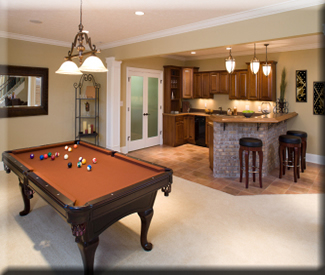Louvre Pyramid Architect I.M. Pei’s Legacy in Paris

In the heart of Paris, amid the grandeur of the Louvre Museum, stands a modernist marvel that has captured the world’s imagination: the Louvre Pyramid. Designed by the legendary architect I.M. Pei, this iconic structure represents a bold departure from the classical architecture that surrounds it, yet it seamlessly integrates with the historic fabric of Parisian heritage.
A Modernist Icon
When I.M. Pei was commissioned to design the Louvre Pyramid in the 1980s, he was faced with the daunting task of creating an entrance that would be both functional and fitting for one of the world’s most renowned museums. Pei, known for his avant-garde designs, saw an opportunity to make a bold statement with a modernist structure that would stand the test of time.
The Visionary’s Inspiration
Pei drew inspiration from the Louvre’s rich history and the grandeur of its surroundings. The pyramid shape, a symbol of strength and unity, was chosen to represent the convergence of art and culture within the museum’s walls. The glass and steel construction of the pyramid reflects the sky above, creating an ever-changing play of light and shadow.
Harmonizing with History
One might wonder how a modern glass pyramid fits within the historic setting of the Louvre, a former royal palace. Pei, with his keen sense of balance and harmony, ensured that the pyramid would complement rather than compete with its surroundings. The structure’s transparency allows it to blend into the landscape, appearing almost weightless against the backdrop of the historic buildings.
Symbolism in Design
Beyond its striking appearance, the Louvre Pyramid is rich in symbolism. The pyramid’s glass panes were specially treated to reduce glare and create a sense of translucency, symbolizing the transparency of knowledge and the accessibility of art. Its four smaller pyramids surrounding the main structure represent the four corners of the world, welcoming visitors from all cultures.
Overcoming Controversy
When the plans for the Louvre Pyramid were unveiled, they sparked intense debate and controversy among Parisians. Critics argued that such a modern structure was out of place in the heart of historic Paris. However, Pei remained steadfast in his vision, believing that the Louvre deserved an entrance that would reflect the spirit of innovation and progress.
Engineering Marvel
From a technical standpoint, the Louvre Pyramid is a marvel of engineering. Pei and his team faced numerous challenges in constructing the glass and steel structure, including the need to ensure its stability and resistance to the elements. The result is a feat of modern engineering that stands as a testament to Pei’s mastery of his craft.
A Symbol of Transformation
Since its completion in 1989, the Louvre Pyramid has become more than just an entrance to the museum. It has come to symbolize the transformation of the Louvre into a modern cultural institution, welcoming millions of visitors from around the globe each year. The pyramid’s striking silhouette against the Parisian skyline has become an iconic image, synonymous with the city itself.
Legacy in Parisian Heritage
I.M. Pei’s legacy in Paris extends far beyond the Louvre Pyramid. His contributions to the city’s architecture, including the Musée d’Orsay and the La Grande Arche de la Défense, have left an indelible mark on Parisian heritage. Pei’s ability to blend innovation with tradition, to create structures that are both functional and aesthetically pleasing, has earned him a place among the greatest architects of our time.
Timeless Beauty
As we stand before the Louvre Pyramid today, we are reminded of the enduring power of architecture to inspire, to provoke thought, and to transcend time. I.M. Pei’s legacy lives on in this modernist masterpiece, a symbol of Parisian elegance and innovation. It serves as a beacon, drawing visitors from around the world to experience the treasures held within the Louvre’s walls.
Conclusion
The Louvre Pyramid stands as a testament to I.M. Pei’s visionary genius and his ability to create beauty that transcends time and place. It is a symbol of Parisian heritage, a modernist icon amidst centuries of history. As we pass through its glass walls and enter the hallowed halls of the Louvre, we are reminded of the power of architecture to elevate the human spirit and connect us to the wonders of art and culture. Read more about louvre pyramid architect





![Unlocking Real Estate Success [Company Name] Unlocking Real Estate Success [Company Name]](https://images.unsplash.com/photo-1583142499515-db3e66a57bdc?fm=jpg&q=60&w=3000&ixlib=rb-4.1.0&ixid=M3wxMjA3fDB8MHxzZWFyY2h8N3x8cmVhbCUyMGVzdGF0ZSUyMGludmVzdG1lbnQlMjBjb21wYW55fGVufDB8MHwwfHx8Mg%3D%3D)


